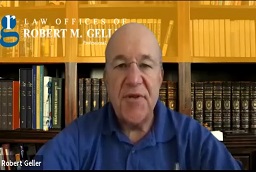
Neil Stephenson
Table of Contents
Click Through Rate and Cost Per Click
One of the keys to effective split testing is to minimize wasting test budget on ads that are never going to perform, so I would start by looking further towards the top of the funnel than directly at Cost per Acquisition (CPA).
Click-Through Rate (CTR) and specifically Cost Per Click (CPC) would be the first metrics to analyze. If your target CPA is £5, and you know the conversion rate is somewhere around 10%, ads that are getting clicks at £2.50 are never going to be good performers. If you looked purely at CPA, you’d need a lot more ad spend to reach statistical significance before you could determine if your ad was going to work or not.
If you look first at CPC, you can confidently stop spend on an ad much earlier in the testing process and ultimately create a better campaign against your cost targets.
Take a Closer Look at Ad Conversion
The number one metric that we check when we split test an ad is the conversion. No matter how well an ad seems to be performing in terms of conversions, we always pit it against another ad to see if it can convert better. In our case, a conversion is a customer signing up for a paid version of our software, so it’s pretty easy to track.

Petra Odak

Christen Costa
Four Key Metrics for Split Testing an Ad
We track engagement metrics on ads for AdWords, Facebook, and Instagram. This includes but is not limited to CTR, impressions per minute, social engagement, and of course, CPC. CPC is the biggest indicator that something we’ve changed is or isn’t working, but it doesn’t exist in a vacuum. It’s much easier for us to determine what’s happening with our ads if we see the whole picture. That’s why it’s important to track at least a few metrics so you’re not relying on one that may change wildly depending on other factors.
It also depends on the platform. Social engagement doesn’t matter with Google, of course. It can matter with Instagram and does with Facebook.
Bounce Rate, Exit Rate, and Engagement
The metrics I pay attention to most when testing is first and foremost bounce rate. Sure, people are coming to the landing page, but are they going anywhere else? The second metric is exit rate and lastly, engagement. The first two are a top priority because it doesn’t mean anything if a guest doesn’t transfer to a lead because they exited too quickly. Engagement is put last solely because you have to accomplish and succeed in the first two to even have worthy engagement.

Need Google Ads Management Help?
Free Google Ads account review for
qualified clients
Almost 20 years experience

Mehvish Patel

Jeremy Yamaguchi
Engagement Metrics, CPC, and CTR
When we’re split-testing ads we’re usually looking at engagement metrics. CPC is the most important by far. The goal is to get this under about 13% whenever we can. But CPC doesn’t show the whole story. We also like to look at CTR, impressions served, audience reached, the maturity of the ad and the overall spend on it.
If we’re running an ad on Facebook, it can also sometimes be helpful to look at engagement in the form of likes and shares, though these don’t contribute much to sales metrics, in my experience.
Impressions and Click Through Rate
The best KPIs to track while A/B split testing PPC ads are impressions and click-through. Impressions mean your copy and graphics are approved from the algorithm and click-through means your viewers are willing to convert.

Douglas Liantonio

Marty Kelly
Three Important Metrics for A/B Testing an Ad
There are three metrics when A/B testing an ad that are most important. Click-through rate, conversion rate, and cost per conversion. The ultimate goal is to maximize an ad ROI.
Click-through rate will tell the tester which ad is enticing more people to click on the ad. Click-through rate will be measured as a percentage compared to the number of impressions of the ad.
Conversion rate is the number of people who click on the ad who also complete the desired goal (a sale or some other conversion) once getting to your website or landing page.
Cost per conversion will measure the cost incurred to show the ad and obtain a conversion.
By tracking these three metrics when doing split (A/B) testing, a person can easily measure which ad is performing the best and maximizing a return on investment.
Revenue By Traffic, Abandonment of Shopping Carts, and Cost Per Conversion
When split testing, you can use software applications that allow you to track various metrics. You want to focus on the metrics that contribute to the success of the business.
Here are a few metrics to focus on:
Revenue By Traffic Source
It is good to notice that you receive website traffic from organic, paid, referral, and direct sources. When split testing, the best thing to do is carry out individual analysis on each traffic source. Once you calculate the revenue by traffic source, you can establish the sources that generate conversions and invest more in them.
Abandonment of Shopping Carts
You want to know the number of people who add items to their carts and fail to proceed to buy. The importance of this metric is that you can recover some of this revenue. Naturally, someone who goes this far in the buying process needs to make the actual purchase. You can send such customers emails, enticing them with discount deals and coupons.
Cost Per Conversion
Every marketing strategy involves the investment of time, money, and other business resources. You may think that a high conversion rate is profitable, but you need to know its cost. If the costs are too high, it is not advantageous to your business. To lower the costs, you can choose to send visitors to pages exhibiting a high conversion history.

Harriet Chan
This is a crowdsourced article. Contributors are not necessarily affiliated with this website and their statements do not necessarily reflect the opinion of this website, other people, businesses, or other contributors.



















